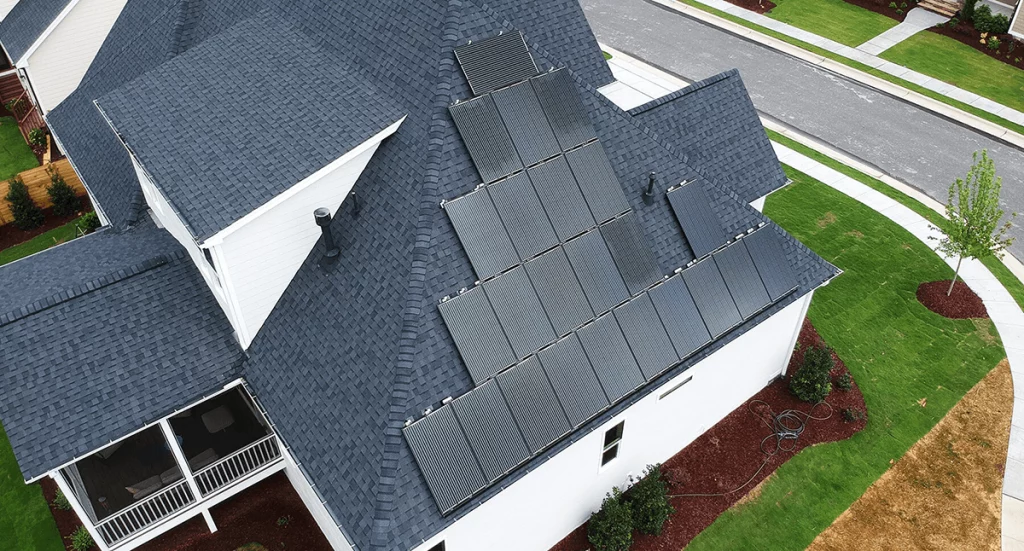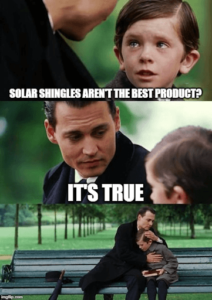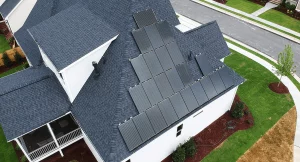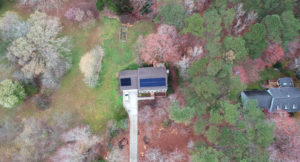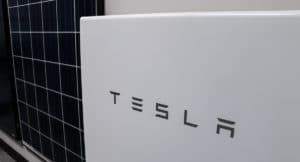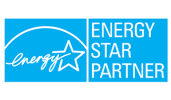7 Key Solar System Components
Knowing the components of a solar system and about the parts of a solar panel themselves will help you understand how solar works while really leveling up your solar knowledge game. After this module, you’ll be able to win any solar trivia that comes your way!
Lesson 01
What are the parts of a solar panel system?
There are 6 main parts to a solar panel system including: solar panels, an inverter, racking, optimizers, the home’s meter, and energy monitoring. There is an optional 7th piece, battery storage, that is not required for a solar system to operate, but offers bonus emergency power points. Let’s dive into how all of these solar components work together!
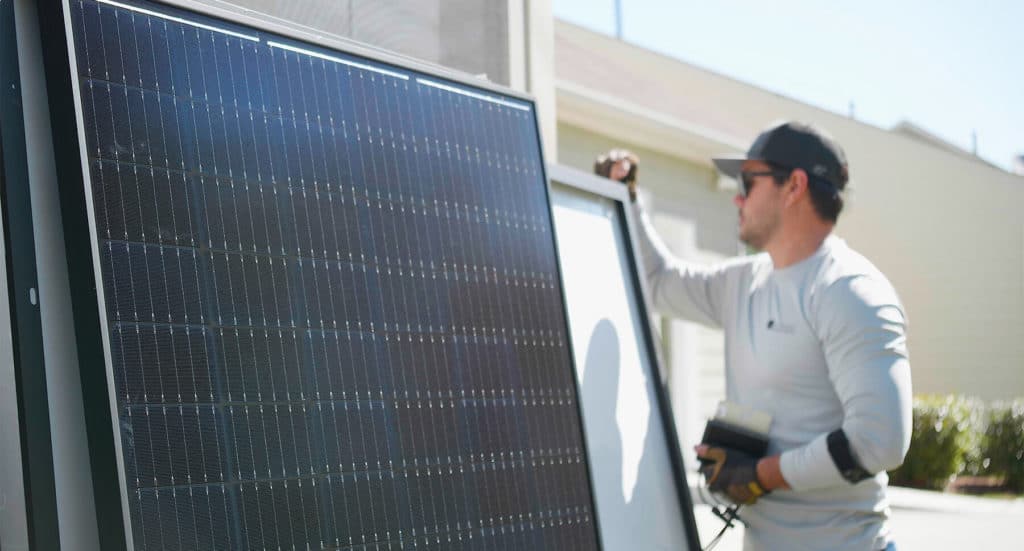
Panels (aka Modules)
Solar panels absorb energy from the sun to generate power. There are many options when it comes to choosing a panel that can impact both appearance and performance. We’ll take a closer look at this in the next section.
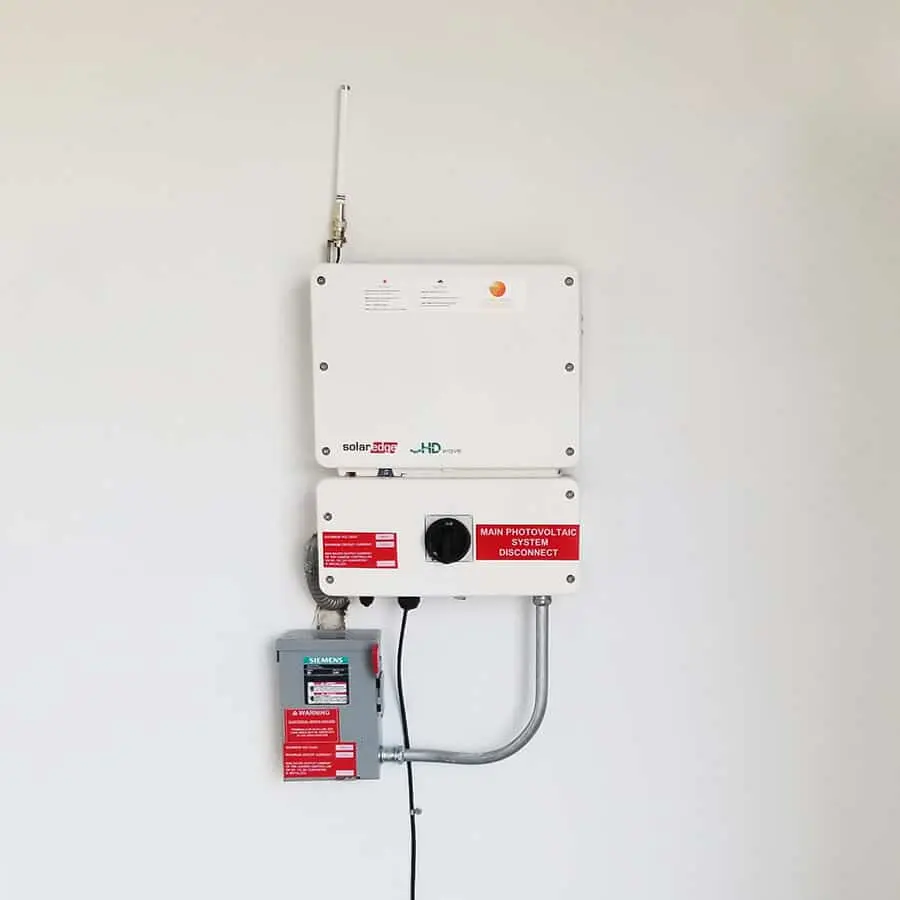
Inverter
Solar panels produce DC (direct current) electricity while your house runs on AC (alternating current) electricity. Your solar system will come equipped with an “inverter” which is the brain that will turn that DC into AC power to be usable in your home. The inverter also performs a lot of other important functions, like managing the power from the panels and making sure the right voltage is flowing into your home or back to the grid.
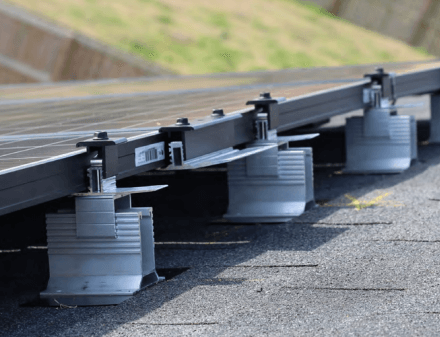
Racking
Solar racking, or mounting, is what holds the panels in place. On a roof-mounted system, racking can be added to new homes during the construction process or retroactively to existing homes.
Types of Racking Systems
On a standard, roof-mounted home solar system, we typically use a racking system that involves installing clamps on the roof which are anchored into the roof rafters and clip into the panel’s frame. Pro Tip: If you are looking at a roof replacement in the next 5-7 years, we would recommend replacing your roof before going solar. While we can remove the panels for your roof replacement, it does come with a cost typically in the $4-6K range.
For low-slope or flat roofs, we can use ballasted racking that features a weighted tray to hold the panels in place. This significantly reduces the number of roof penetrations which is important with membrane roofs (like TPO).
Ground-mounted systems have an engineered racking frame that is securely anchored into the ground.
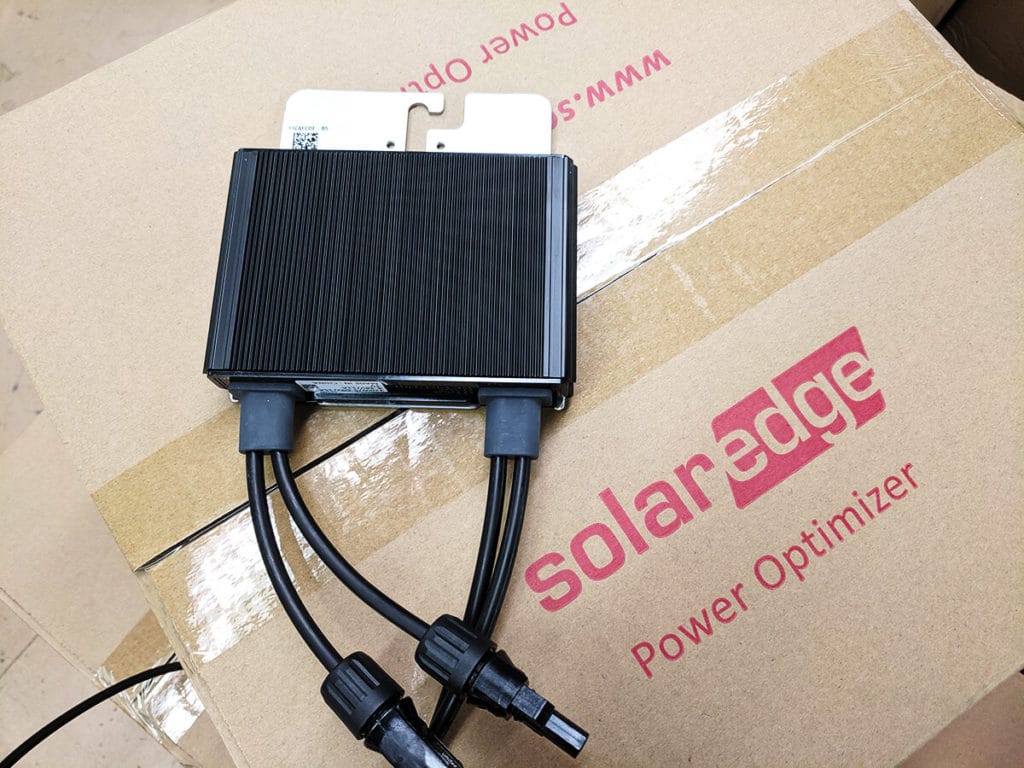
Optimizers
Optimizers are installed on the back of each solar panel to ensure that each solar module is able to produce at its maximum power even if another panel is shaded or has bird poop on it.
They also help track performance so you can see how each panel is functioning which makes it easier to identify and troubleshoot any production issues. When the system is down, optimizers also automatically shut off power as a safety measure.
Optimizers perform a similar function to micro-inverters, but they stand up much more reliably to North Carolina’s heat and humidity.
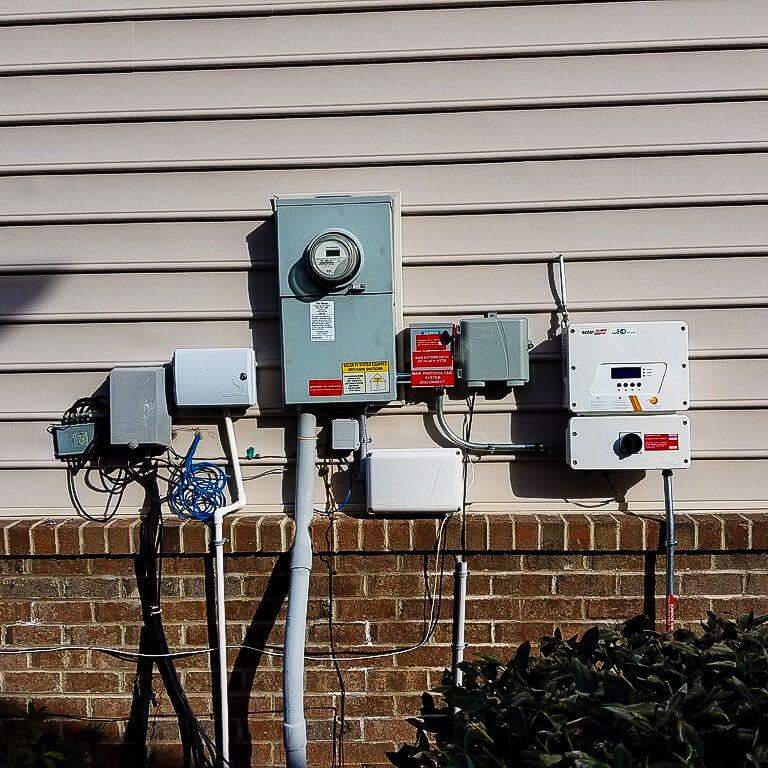
Meter
Once your solar system is installed, your utility will come out to switch your old meter with a fancy new bi-directional meter. The new meter will allow you to be properly credited for the solar energy you send back to your utility.
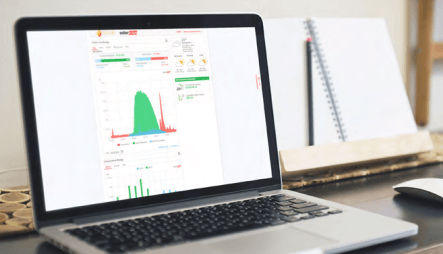
Energy Monitoring
The final component, and arguably one of the most important, is your solar system monitoring. The systems we install come equipped with production and consumption monitoring so you can compare how much energy your panels are producing to how much energy you are using.
To see solar monitoring in action, check out this fun video that goes into more detail:
Video: How to Use SolarEdge Web Monitoring to Maximize Your Solar →
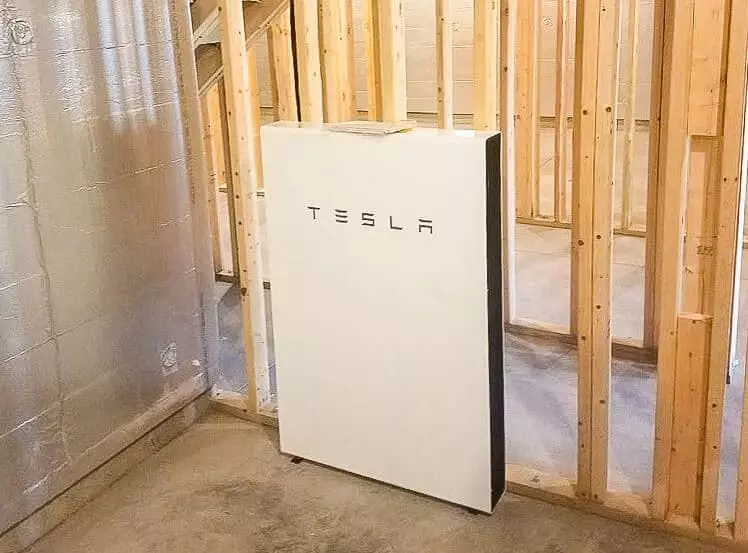
Batteries
Batteries store the extra power your solar system produces to be used later by your home. Whether you’re looking for energy security to keep your power on when power outages happen, or if you want to power more of your home with clean solar energy, battery storage will help you reach those goals.
Benefits of Battery Storage for Solar Power
When the power goes out, batteries like Tesla’s Powerwall or Generac’s PWRcell will still operate and the home will automatically switch over to the batteries to draw power. On top of that, the solar system will keep recharging the batteries when the sun is shining so you can keep the lights on and ice cream chilled while the utility is fixing its issues.
Beyond backup power, battery storage can also be used to capture a higher value for solar in areas served by utility providers that don’t offer net metering or have more expensive electric rates during certain times of the day. In these scenarios, homes are able to maximize their solar savings potential by programming the battery system to store energy when utility rates are low to then be used when rates are high. Check out our in depth guides on Tesla’s Powerwall and Generac’s PWRcell for much more information.
Lesson 02
Types of Solar Panels
After being in the solar industry for 20+ years, we can tell you just how far solar panels have come in both efficiency and looks. There are two primary types of solar panels: polycrystalline (poly) and monocrystalline (mono).
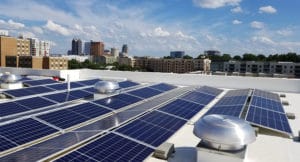
Polycrystalline (Poly) Panels
Poly cells are instantly recognizable by their space-age blue hue. Until a few years ago, poly panels dominated the market because they were significantly less expensive to produce. Today, however, mono panels have fallen in price and have taken a rise in popularity. Poly panels are now most prevalent in commercial and utility scale solar projects where their distinctive appearance is less of a consideration.
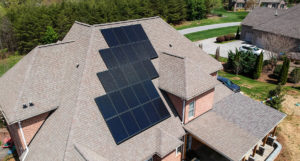
Monocrystalline (Mono) Panels
Mono cells are made from a single crystal which gives them their characteristic uniform black color. Not only are mono panels more sought after because of their sleek appearance, they are also more power dense and degrade less over time. The price of mono panels have dropped greatly over the past decade and they now make up the majority of our residential solar installations.

Solar Shingles
Solar shingles function in the same way as traditional solar panels, using photovoltaic cells that convert photons from the sun’s rays into electricity. However, the appearance of solar shingles is much thinner than a traditional panel so that the solar system can integrate within the existing roof or be installed as a whole-roof replacement option.
Common Question
Solar Shingles vs. Solar Panels?
Solar shingles have been powering in and out of the headlines for the past few years after Tesla debuted their solar roof product. Although still in limited production on the East Coast, the future of solar is definitely S3XY with options that camouflage the appearance of rooftop solar.
Solar shingles aren’t a new concept, in fact, we installed Dow’s version of solar tiles in 2014 and a few predecessors even earlier. Although we dream of a beautiful future where solar is fully integrated into the design and build of a home, and HOA’s have nothing to object to, our main concern is the savings potential of the solar shingles that are currently on the market.
Right now, solar shingles are much less power-dense than their cousin the PV module. On top of that, a full roof replacement is required when switching to a solar roof so there is also a large increase in material and labor cost. This is why the payback on a solar roof is much longer than a traditional solar system.
Check out our article, Tesla Solar Roof: To Wait Or Not To Wait, to learn more about the pros, cons, payback, and whether you should get in line for a solar roof in NC.
Lesson 03
Parts of a Solar Panel
Diving deeper, there are three primary components that make up a solar panel: solar cells, back sheet, and frame. Each of these elements can come in different styles and be mixed and matched to achieve different looks at varying price points.
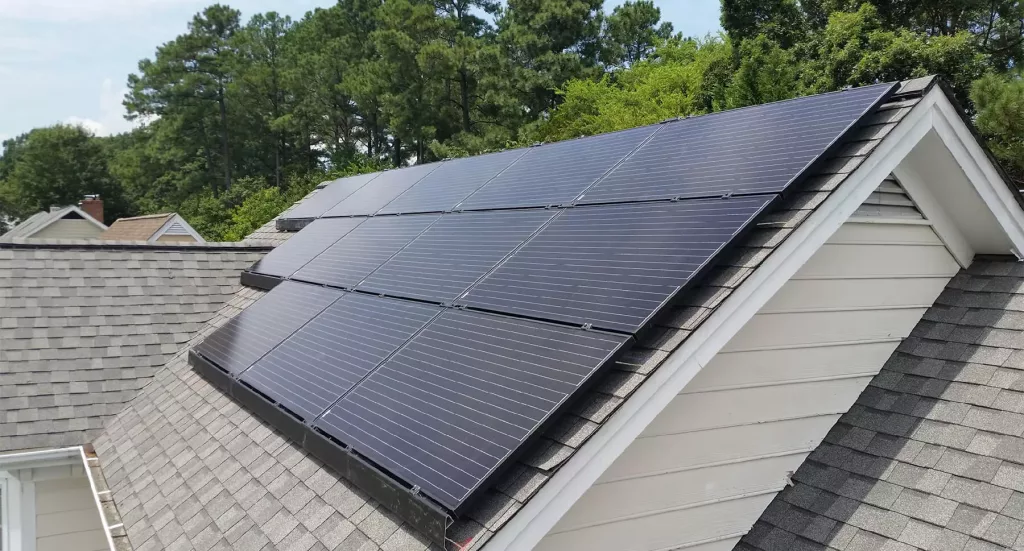
Solar Cells
Solar cells are the power house of the solar panel! Their job is to capture energy from the sun and turn it into electricity. The primary ingredient in most solar cells is silicon, and they typically come in two variations — polycrystalline (poly) or monocrystalline (mono).
Polycrystalline cells can be identified by their beautiful blue hue. Monocrystalline cells take on a sleek, black appearance. The number of cells in a panel can vary. An average-size residential solar panel typically has 72 cells.
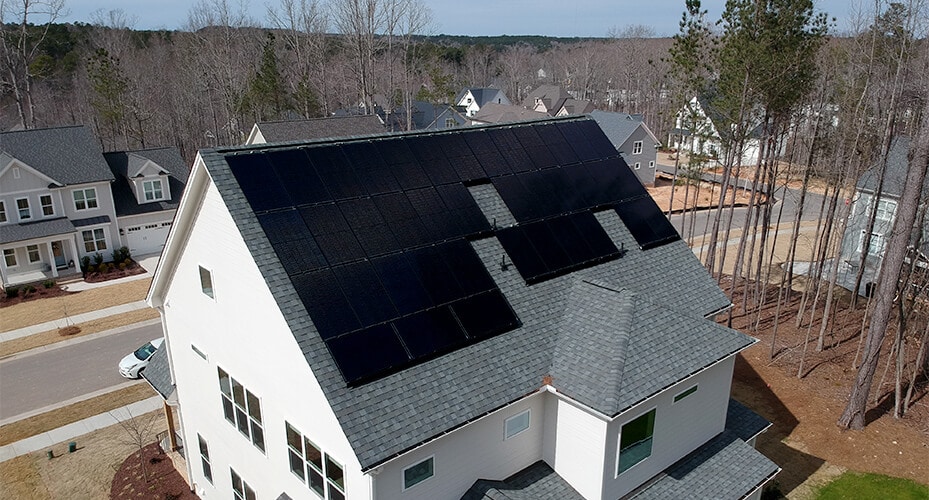

Frame
Much like a picture frame, a solar panel’s frame is what holds the sandwich of glass, silicon cells, and back sheet together. Solar panel frames are made of lightweight and durable aluminum and come in two colors: black and silver. Both styles perform the same, so it all comes down to aesthetic preference. Silver frames are typically paired with a poly cell and come in at a lower price. Black frames are definitely more popular for residential solar systems and pair nicely with poly or mono cells.

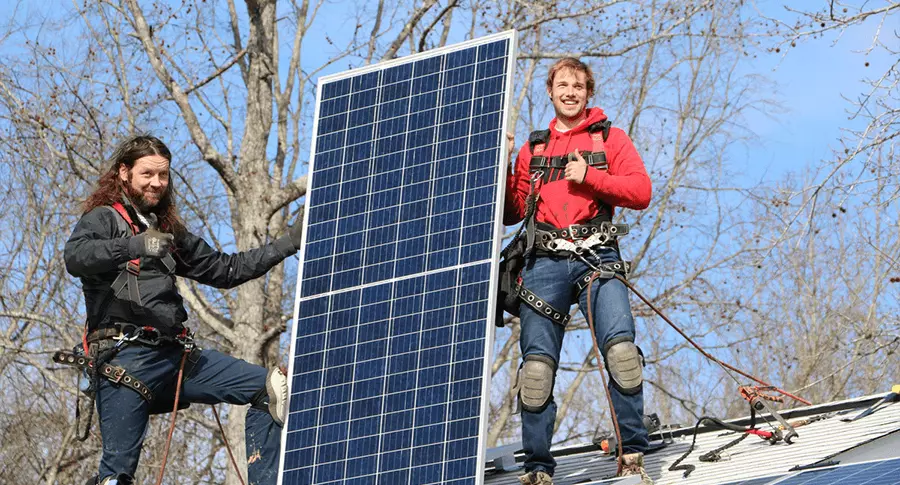
Back Sheet
Beneath the silicon cells in a solar panel is a layer called a back sheet. The primary function of the back sheet is to protect the components inside the panel, however, it does impact their appearance as well! Solar back sheets come in black or white. Most homeowners prefer a black back sheet with black cells and a black frame so their panels blend in better with their asphalt roofs.

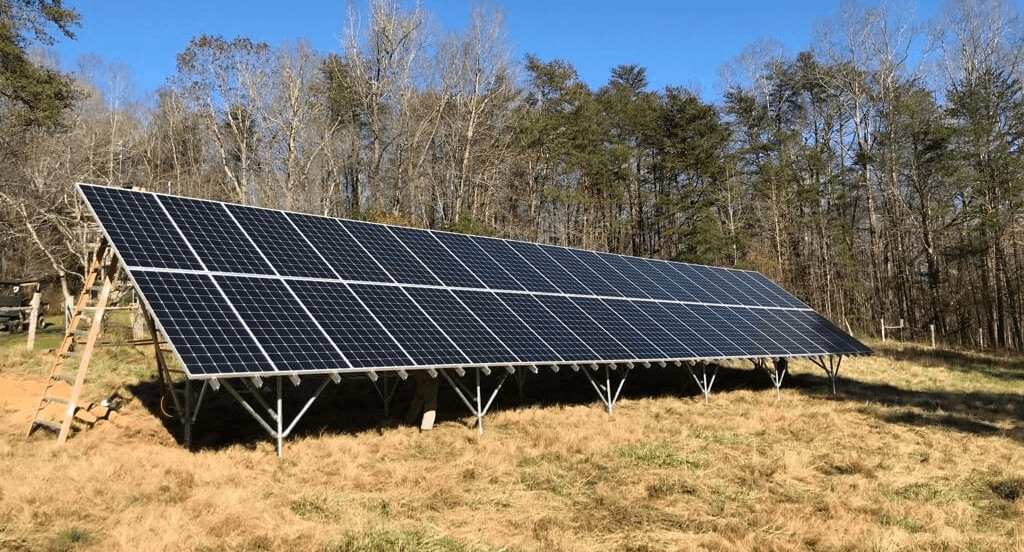
Common Question
What should you look for in a solar panel?
Solar panel manufacturing is a relentlessly competitive industry. Several manufacturers have risen to the top during this process but using Tesla’s CEO Elon Musk’s phrasing, “Manufacturing solar panels is a lot like manufacturing drywall”. Technology will continue to evolve and improve, but generally, we see marginal improvements yearly. With that said, here are the top 5 things to look for in a solar panel (in order of importance):
- Reliability of the solar company you choose: The most important thing to consider when choosing a solar panel is the reputation and stability of your solar installation provider. Most solar installers will acknowledge that the longevity and reliability of solar panels are outstanding, but the company/provider that installs the panels is considerably more important.
- Support from your solar company: When you go solar, the company you choose should provide support throughout the entire process – before, during, and after installation. Follow-up care after the installation, yearly check-in post-installation, and dedicated service are all a given at Southern Energy Management. Don’t settle for less!
- Reliability of the manufacturer: When looking at the panel itself, a manufacturer with a successful track record of low warranty claims is ideal. Going solar with a local and truster solar installer means you won’t have to worry about the manufacturer’s details.
- Manufacturer’s Warranty: Many top-tier manufacturers will carry a 25-year warranty on both production and workmanship.
- How quickly will the panel degrade over time (Degradation Rate): Most top-tier manufacturers will carry a 25-year warranty and guarantee 85% performance or more in year 25. Ultra-premium options may be in the 92% range in year 25.
Lesson 04
Where are solar panels made & assembled?
Here’s a challenge! Find something in your home that uses energy and is 100% made in America (yes, parts, pieces, and production included). Between your television, computer, cell phone, car, and refrigerator, we’re betting not one of these would make the list. Like all other tech products, where a solar panel is assembled does not paint a complete picture of where the panels actually come from.
To learn more about where panels are made and assembled, check out our guide here or use the quick links below for specific questions:
- What’s the difference between manufacturing and assembly? →
- Where are solar panel components manufactured? →
- Where are solar panels assembled? →
- Where do our solar panels come from? →
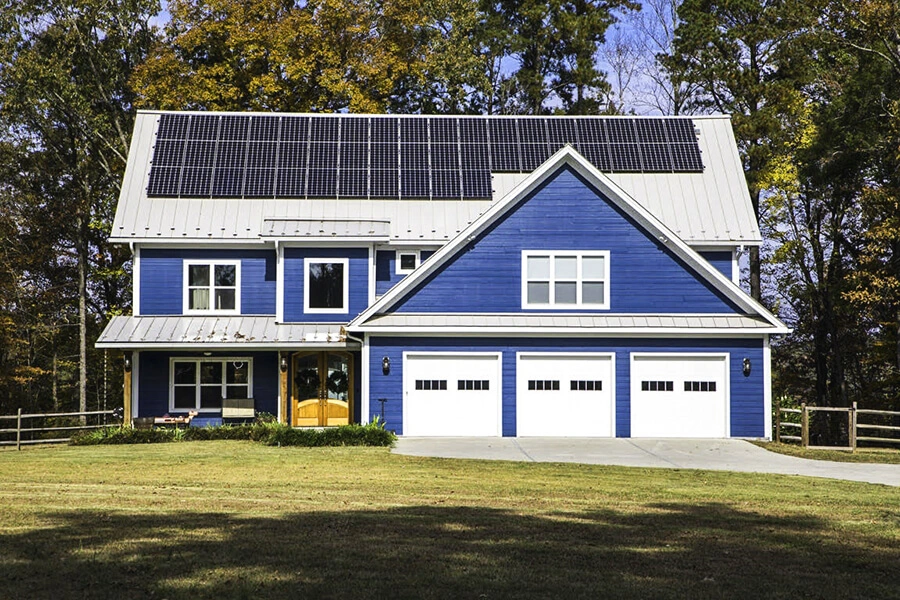
Lesson 05
Do solar panels require maintenance?
Solar panel systems in North Carolina require little to no maintenance or cleaning. In areas like Arizona that have high dust and little precipitation, cleaning your solar panels is a thing. However, here in the South-East, our temperate climate and relatively frequent rainy days means dust and dirt don’t really build up so cleaning your panels is not something you need to have on your to-do list.
At most, homes with heavy tree coverage might experience some tree sap buildup. But if there is a significant amount of sap on your panels, you probably have trees too close to your home. We recommend that homeowners do not attempt to get on their roof to clean their panels — safety first!
For our friends at the coast, there is an official salt mist resistance test (IEC 61701) applied to solar panels. Any module that has this certification is rated to be installed along the coast. There are different levels to this test that give better protection the closer you get to the ocean, but most panels have at least level 1 certification.
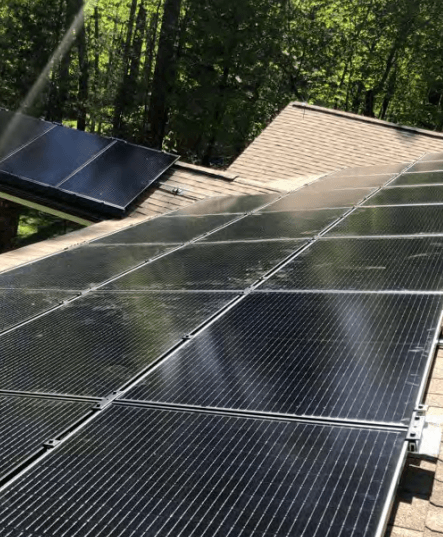
Pollen on solar panels
As for the NC pollen surge each year, there’s no need to add your solar system to your spring cleaning list. We model in the production loss from soiling (pollen, leaves, dust, water, deposits, etc.) when we design your system.
One of our customers actually put their system to the test by tracking the impact of pollen on their solar system’s production. Based on what they tracked and calculated from their monitoring data, there was an insignificant decrease in production during pollen season.
Ultimately, the lost production value is minimal and not worth a pricey cleaning service fee. You’re best to tap into mother nature’s free cleaning service by waiting for the next rain to come through.
How durable are solar panels?
In North Carolina, knowing how your solar system will hold up to hurricane-force winds is important. Luckily, this isn’t something you need to spend any time worrying about. Through our design and permitting process, the solar systems we install are specifically engineered to endure high wind-speeds and are tested by manufacturers to ensure they can survive hurricane conditions.
Solar panels are certified to withstand winds of up to approximately 140 miles per hour. As long as your roof is in place, your panels will be right there with it. Additionally, the typical aluminum and glass casings that hold solar cells are highly waterproof, even during extreme rain. As for hail, panels are engineered to bear the impact of hail 1” in diameter.
With that said: trees, falling limbs, and other debris could damage your solar system or the surrounding roof may be damaged. The good news is that the racking system we use allows us to easily remove the panels so that the roof can be repaired. If either of these events occurs, the damages should be covered by your homeowner’s insurance and we will work with you to make sure you have all the information you need to file a claim.
Common Question
Solar Warranties: How long do solar panels last?
Most panels typically carry a 12-year product warranty and a 25-year power output warranty. The power output warranty guarantees that, in 25 years, each panel will produce approximately 85% as much electricity as it does when it’s first installed (the exact percentage varies by manufacturer).
Note — after year 25, your panels will still continue to produce energy and will continue to degrade at the same rate. If a panel’s production level drops below the linear degradation rate defined in its warranty, the manufacturer will replace the panel!
Other Solar Equipment Warranties
The inverter also has a standard 12-year warranty, while the optimizers will come with a 25-year warranty.
Quiz Yourself!
What's Next?
Module 3: Is Solar Right for You?
Now that we’ve got all the fun facts about solar equipment, manufacturing, and warranties out of the way, let’s dive into how to determine if solar is a good fit for you and your home →
Ready to kick your solar journey into full gear? Reach out for a free solar assessment or schedule a meeting to have your questions answered by our solar educators, Dave and Sophie.
Solar 101 Guide
Learn More Solar 101
Ready to Get Started?
Schedule a free assessment to learn more about solar power & battery storage for your home.
About Us
North Carolina’s solar power and building performance expert. Founded in 2001, we’ve worked for 20+ years to improve the way people make and use energy.

